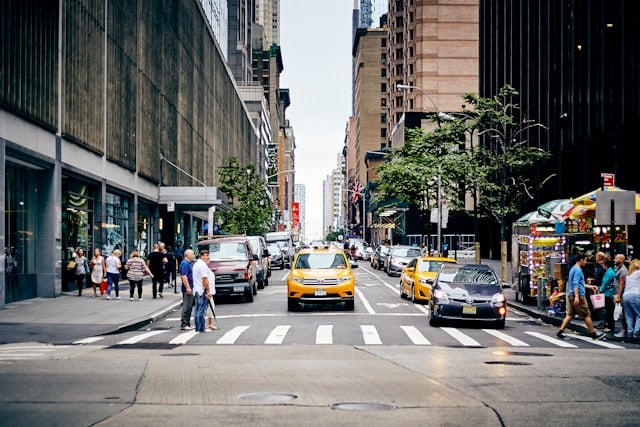How to Prevent Your Car from Collision Damage in Urban Areas
 Navigating the bustling streets of urban areas presents unique challenges for drivers, where the high density of vehicles, pedestrians, and cyclists increases the risk of collisions. Protecting your vehicle from damage in such environments is crucial not only for maintaining its aesthetic and structural integrity but also for ensuring the safety of all road users. This article offers practical advice on how to minimize the risk of collision damage when driving in urban settings, helping you to safeguard your vehicle effectively.
Navigating the bustling streets of urban areas presents unique challenges for drivers, where the high density of vehicles, pedestrians, and cyclists increases the risk of collisions. Protecting your vehicle from damage in such environments is crucial not only for maintaining its aesthetic and structural integrity but also for ensuring the safety of all road users. This article offers practical advice on how to minimize the risk of collision damage when driving in urban settings, helping you to safeguard your vehicle effectively.
Stay Vigilant and Drive Defensively
Practice Defensive Driving
Defensive driving is key to preventing collisions. This means being aware of your surroundings, anticipating the actions of other drivers and pedestrians, and being prepared to react safely. Always assume that others might not see you or adhere to traffic rules and be ready to stop or maneuver safely.
Maintain Safe Following Distances
In the stop-and-go traffic typical of city driving, keeping a safe distance from the vehicle in front of you is essential. This distance allows you enough time to react if the car ahead suddenly brakes. A good rule of thumb is to maintain at least a three-second gap, which you may need to adjust depending on weather conditions or the speed you are traveling.
Use Your Mirrors Actively
Regularly check your mirrors to keep track of vehicles approaching from behind or changing lanes. Being aware of your surroundings helps you make safer driving decisions and can prevent collisions caused by sudden lane changes or other vehicles entering your blind spots.
Navigate Intersections Carefully
Watch for Pedestrians and Cyclists
Urban areas are teeming with pedestrians and cyclists who may not always be visible as you approach an intersection. Always slow down and look both ways, even if the light is in your favor. Be particularly cautious when turning right on red, as pedestrians often have the walk signal during these moments.
Follow Traffic Signals and Signs
Adherence to traffic signals and signs is crucial. Running a red light or ignoring a stop sign can lead to severe collisions. Even if you notice other drivers bending these rules, commitment to following them enhances safety for everyone on the road.
Anticipate Light Changes
When approaching traffic lights, anticipate changes and slow down rather than speeding up to beat a yellow light. Rushing through intersections can lead to collisions with vehicles entering from cross streets.
Adjust for Environmental Conditions
Weather Considerations
Rain, snow, and even low sun can impair driving conditions and visibility. Adjust your driving speed to match weather conditions, and ensure your vehicle’s headlights, taillights, and windshield wipers are in good working order to enhance your visibility and that of other road users.
Be Aware of Road Conditions
Potholes, uneven roads, and unexpected obstacles like debris can cause you to lose control of your vehicle or force sudden maneuvers that might lead to collisions. Keep an eye on the road ahead and drive slowly enough to react safely to these conditions.
Regular Vehicle Maintenance
Keep Brakes and Tires in Good Condition
Regular maintenance of your brakes and tires is vital. Well-maintained brakes prevent accidents in situations where you need to stop suddenly, while good tire tread and proper inflation ensure better traction and control, reducing the risk of accidents.
Schedule Regular Check-Ups
Regular vehicle check-ups can catch potential issues before they become serious problems. Ensure that your car’s braking system, lights, and engine are regularly inspected by professionals.
Conclusion
Preventing collision damage in urban areas requires a combination of vigilant driving, adherence to traffic laws, and regular vehicle maintenance. By adopting these practices, you can significantly reduce the risk of accidents and ensure a safer driving experience in the city. Remember, the best way to deal with collision damage is to prevent it from occurring in the first place.
